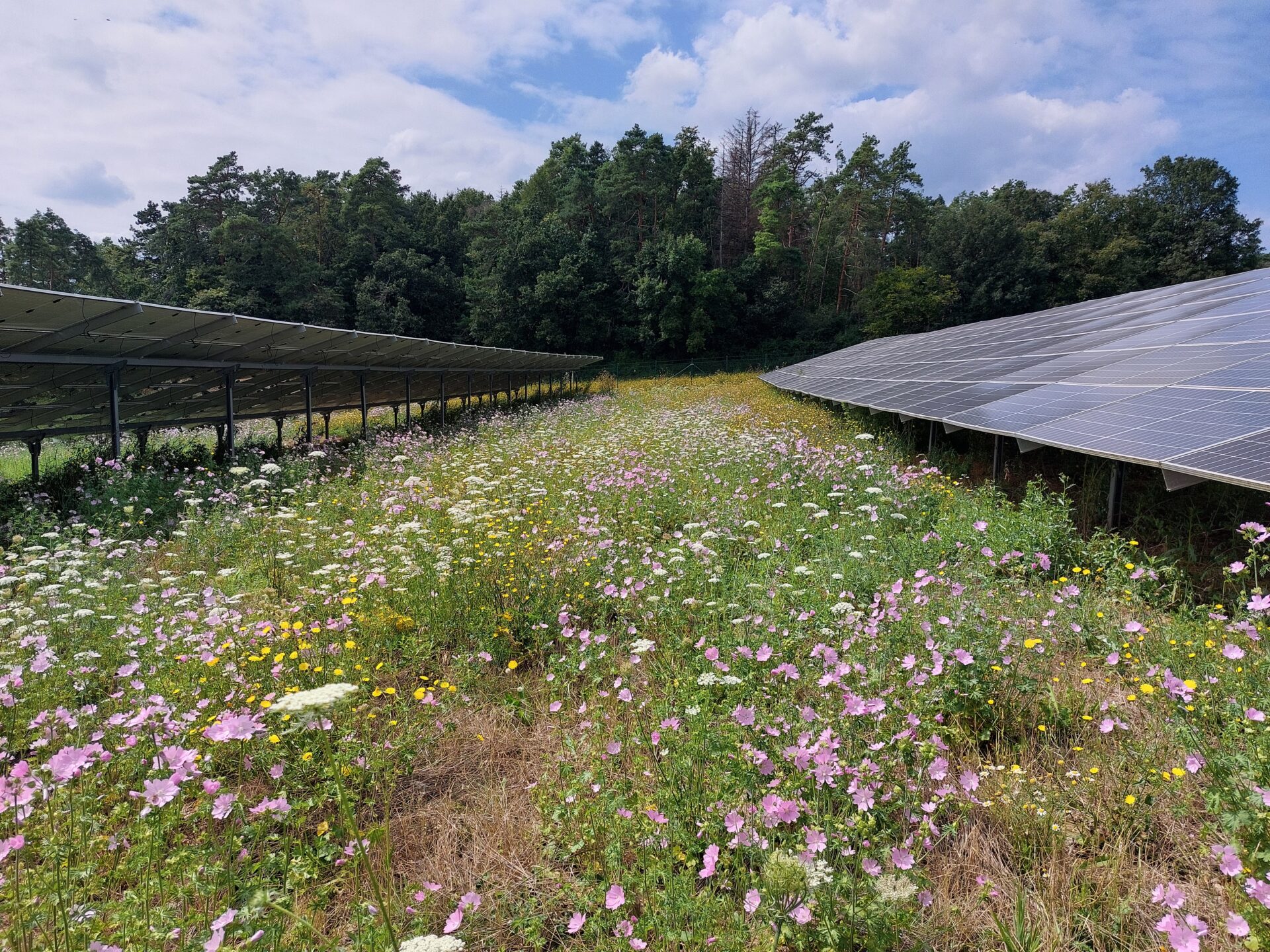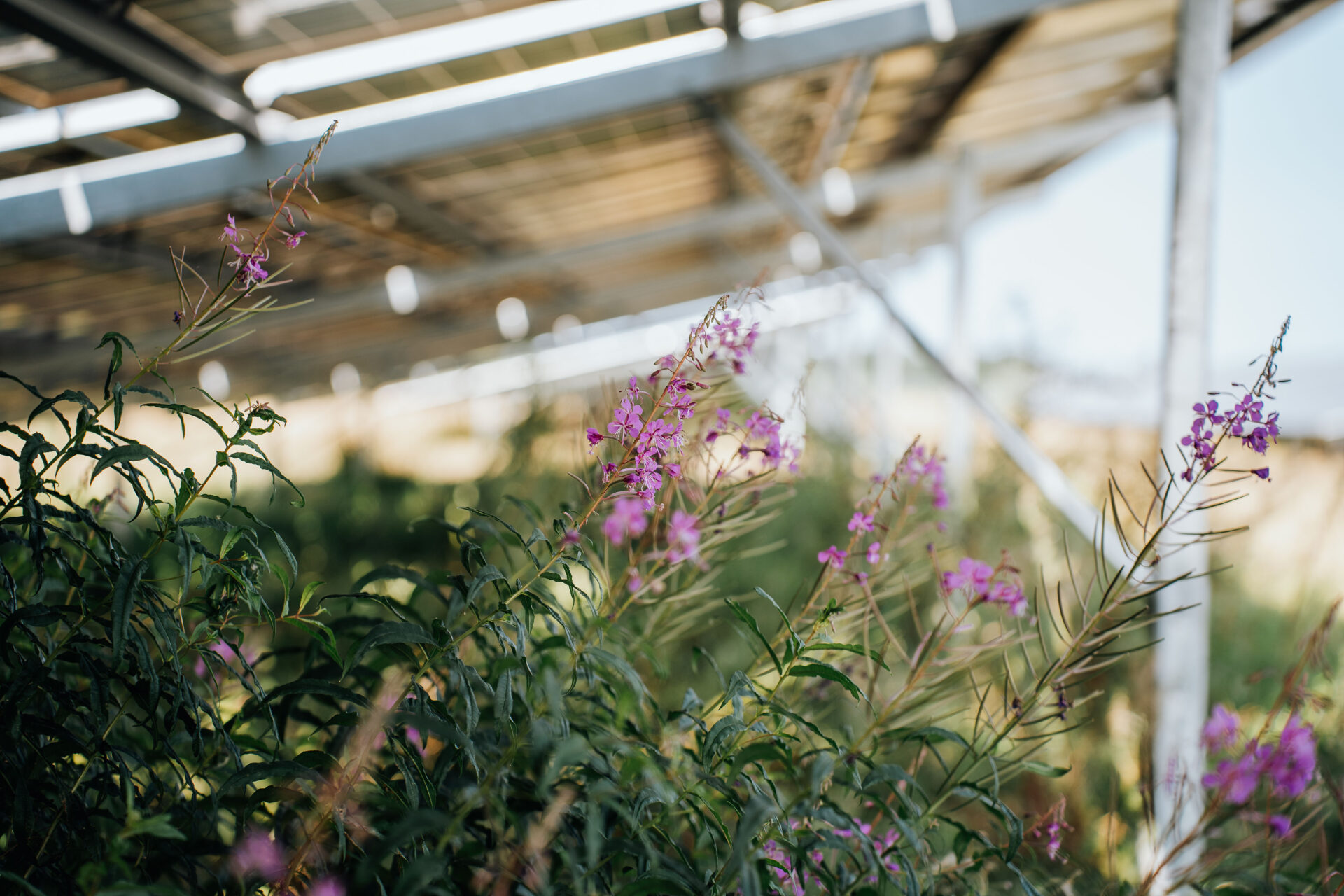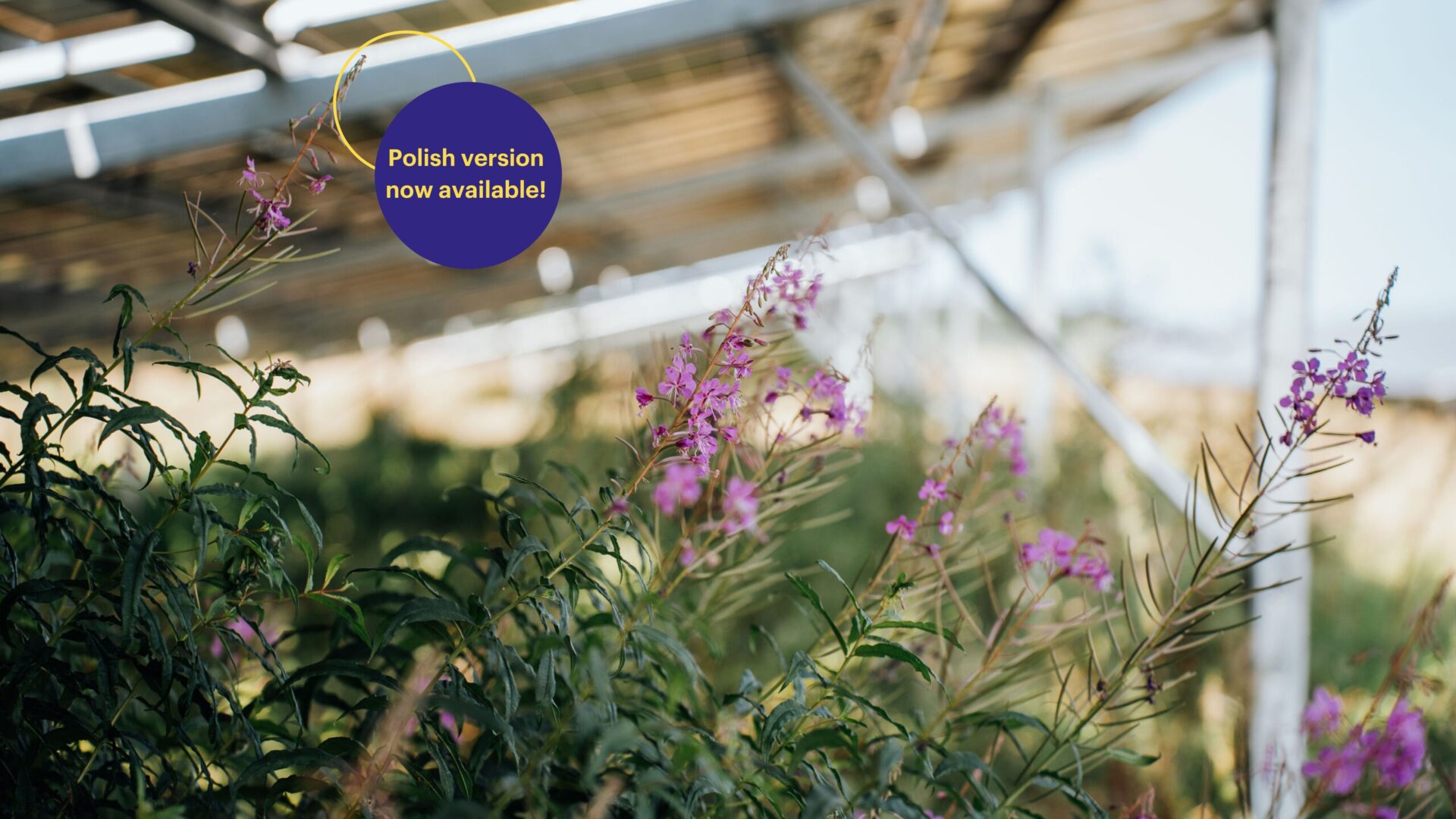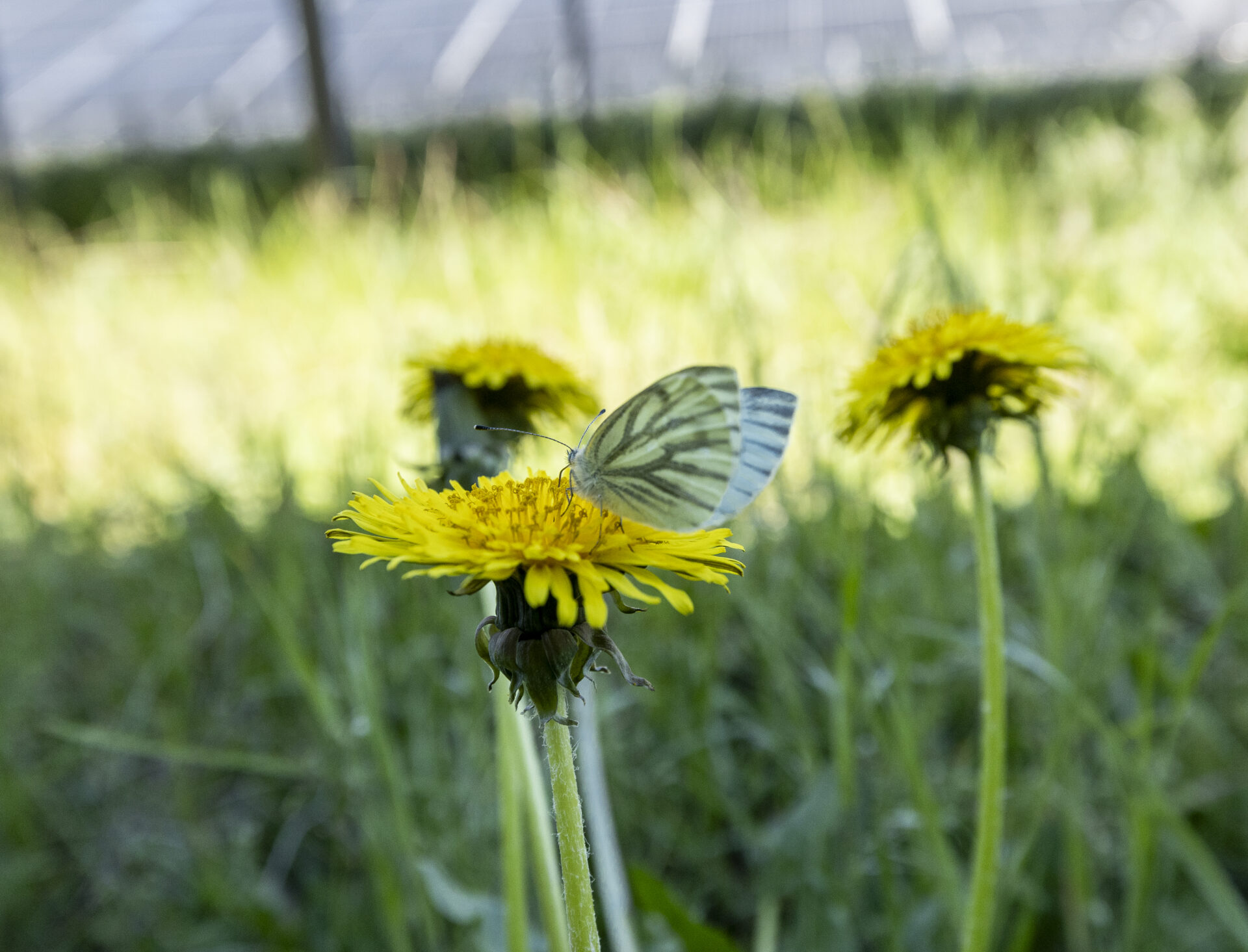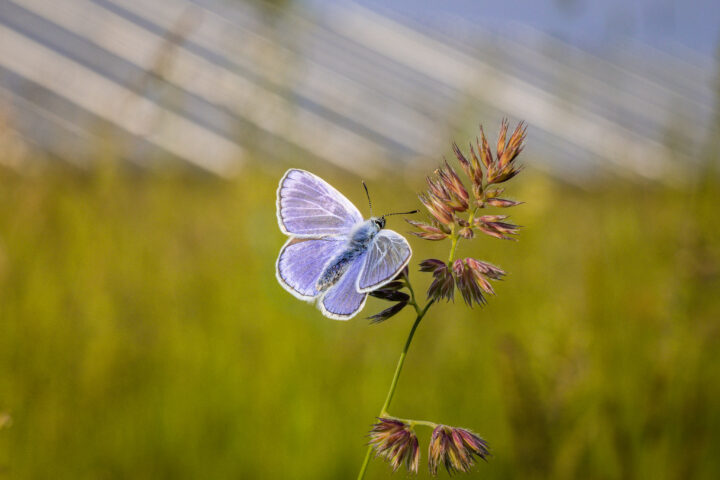The Bundesverband Neue Energiewirtschaft e. V. (bne) has published a comprehensive study on biodiversity in modern solar parks. In 2024, the flora and fauna in 30 ground-mounted PV installations across Germany were examined and systematically analysed for eight species groups. The finding: solar parks on agricultural land increase biodiversity in the cultural landscape. The results of the world's most comprehensive study on biodiversity in solar parks on agricultural land are valuable for authorisation practice. They can help to activate the biodiversity potential in solar parks in a targeted manner.
Robert Busch, Managing Director of the bne, sees solar parks as all-rounders in the energy transition: "Our study shows that solar parks can do far more than just produce cheap electricity. Modern ground-mounted photovoltaic systems create valuable habitats for flora and fauna in our heavily agricultural landscape. Precisely because solar parks are built in the middle of the agricultural landscape, they actively strengthen biodiversity locally and thus in Germany for decades. The extensive findings on the current state of biodiversity in solar parks are relevant both for authorisation practice and for species and nature conservation."
The field study "Biodiversity in solar parks - a nationwide field study" is the continuation of a bne biodiversity study from 2019. The field study was coordinated and implemented by biologists Dr Tim Peschel (Peschel Ökologie und Umwelt) and Rolf Peschel (project sponsor). A total of 30 solar parks in 10 federal states and a sun-tracking "tracker system" in Denmark were analysed. Detailed inspections were carried out in each case by the authors and other experts. The study is based on over 100 individual surveys and a total of 40 survey reports with species records on flora, birds, butterflies, grasshoppers, bats, reptiles and, in suitable solar parks with bodies of water, also on amphibians and dragonflies. The authors summarise the findings in a main work.
Well-planned solar parks are an added value for biodiversity
According to Dr Tim Peschel, solar parks can play an important role in increasing biodiversity in Germany: " The key finding is that well-planned solar parks on former agricultural land represent a real added value for biodiversity compared to the predicted situation. We have identified proper maintenance as one of the decisive factors for biodiversity." A total of 385 plant species, 30 grasshopper species, 36 butterflies, three reptile species, 32 breeding bird species and 63 bird species as foraging guests as well as 13 bat species were recorded. There are also 13 dragonfly species and eight amphibian species. "Ground-mounted PV systems offer a mosaic of new, obviously suitable habitats for many species in the structurally poor agricultural landscape. They are increasingly being discovered and utilised as habitats by animals and plants. The food supply available there is an elementary prerequisite for birds and bats to be able to use them as habitats in the long term. Mowing and grazing are important maintenance measures for the creation and preservation of biodiversity" says Dr Tim Peschel.
Biodiversity-promoting management of solar parks
The majority of ground-mounted PV systems are already being built on agricultural land, which is why these are also the subject of the study. In addition to the construction method, the right land management is also crucial for high biodiversity in solar parks, e.g. through mowing and removal of cuttings or gentle grazing. "Because agriculture provides the land for solar parks, the bne believes that the biodiversity-promoting management of solar parks should be recognised as agricultural use. In this way, the competition for land between agriculture and photovoltaics could be resolved in a similar way to agri-PV," says Robert Busch.
Download: Study and executive summary
The study "Biodiversity in solar parks" summarises the results of all the investigations. As this is a comprehensive work, the most important findings have been summarised in an abridged version. We are currently working on an English translation of the study results, which we will be publishing soon on SonneSammeln.
Press release, press kit, solar park images
The Bundesverband Neue Energiewirtschaft e.V. (bne) has issued a press release on the publication of the study and is providing a press kit with a selection of solar park images.
